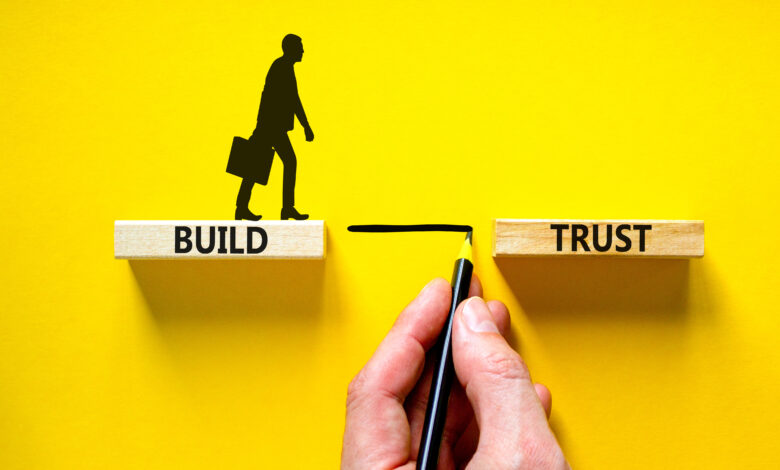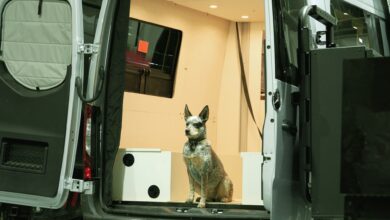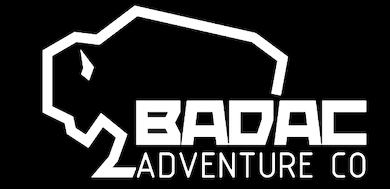The Benefits of Building Customer Trust
Why selling is the ‘transfer of trust’ and how to find the sweet spot in sales.

Of all the things salespeople need to learn when working with customers, the one thing often missed when dealerships train new salespeople or retrain existing salespeople is how to build trust with their customers.
Most dealerships rely on the sales staff’s interpersonal skills to get the job done; however, that alone usually isn’t enough. Being a nice person always helps, but for the customer who walks in the dealership with anxiety about working with a salesperson, more is needed to knock those walls down. This is not an isolated case either, as most customers dread working with a salesperson for one reason or another, whether that fear is real or perceived. If you don’t think that’s true, just sit and observe the behavior of customers when they walk through the front door.
Some customers have become skilled escape artists, using a multitude of tricks like walking fast right by a salesperson without saying a word, asking where the restroom is and then slipping out the back door to the lot or using the age-old line all salespeople hate – “I’m just looking” – to avoid saying hello to a salesperson.
Therefore, even though everyone in management or on the sales staff realizes that customers resort to those tactics, nearly no one includes improving the techniques and steps to make rapport building a priority in training. Everyone focuses on product training, handling objectives and closing techniques, but avoids this sensitive topic. We all forget that long before customers are customers, they are people. So, it’s odd that so many training programs discount this as a priority. When salespeople come to me for individual coaching, other than handling the rejection of customers repeatedly saying no to buying, building rapport and trust is the most neglected item on the list.
One of the biggest obstacles is that it takes more time. Dealerships typically run with the lowest possible salesperson headcount in order to have enough business to keep everyone happy. Another obstacle is that because salespeople really do want to be customer service-oriented, when a customer wants to just rush out to the back lot to look at product, they just let them do it. When this happens, the single most important event in the entire process gets missed – the opportunity for the salesperson to prove to the customer that they really do have their best interests at heart, and they aren’t the boogeyman the customer thought they were.
When the salesperson and customer just race out to the lot to look at product, it’s an exciting event – for the moment. The customer doesn’t realize that they missed the chance to get to know and trust the salesperson until the moment of truth, when the salesperson asks for the sale and the customers says no. In some cases, they may not even know why they’re saying no – but I do: It’s because they don’t trust the salesperson. The sad part is that most of the time the salesperson doesn’t realize that the decision they made to let the customer rush into the lot three hours ago cost them the sale.
Less (Stress) Means More
Customers are more anxious than ever before, with the aftereffects from COVID, politics getting uglier every day, the economy, rising prices, ballooning interest rates and so many other things that cause stress. This puts even more importance on salespeople taking time to slow down in the first few minutes, go through the three minutes of discomfort to get the customer to wait, and giving both a chance to build rapport and trust with each other. Everyone involved will enjoy the process more, and relieve the pressure cooker customers usually walk in with, by taking a few minutes to really get to know each other.
Even if this hasn’t made sense to salespeople so far, here are 20 more reasons why taking the time to build rapport and trust with customers will benefit everyone involved. Customers will:
-
- Listen to what the salesperson has to say in the demonstration
- Follow their advice and recommendations
- Pay less attention to negative comments they might have read online about the dealership
- Be more honest in answering the salesperson’s questions
- Be more open to enjoying the shopping process and having more fun
- Reduce the amount of negative body language clues for the salesperson to have to figure out
- Be more vocal and receptive to answer the salesperson’s questions
- Feel more confident in the salesperson’s promises and commitments
- Be more honest in telling the salesperson information they need to know, like how they plan to use their RV or what their budget is
- Pay more attention to the explanation of the features
- Raise objections sooner for the salesperson to address
- Have fewer misunderstandings with the salesperson
- Move faster through the shopping process
- Be less price-focused
- Be more open to high-profit add-ons
- Feel comfortable asking for clarification when they are confused
- Become a friend
- Become a referral machine for the salesperson
- Be more flexible in the financing process
- Buy from you!
World-renowned sales coach and trainer Jack Daly says that “Selling is the transfer of trust.” There is no doubt about the absolute value of rapport and trust with your customers. No one can argue that trust beats price, quality, reputation, location and service.
The best way to implement this is to look at the first 15 to 30 minutes of any customer visit as the “sweet spot” of the sales process. All salespeople need to step back and take a critical look at every single step they take during this time period.
Other tips that will help salespeople put more emphasis on this time period are:
-
- Take a few minutes to empty your head when finished with the customer before. Grab a water and/or a snack. Stopping and letting the world stop for five to eight minutes will help you be fresh and ready to start anew with the next customer.
- Start with a blank piece of paper with each new customer and build the information that is specific to them. What happened with the last one has nothing to do with the next one. If the last customer was rude and unpleasant to deal with, the memories and emotions of that must be wiped clean from your memory, with no carryover.
- You must slow the customer down. They will be excited to look at RVs but a “get to know you” period must come first.
- If you can’t determine how the customer prefers for you to work with them by what they say or their body language, ask them. Each customer has a preferred way they like the salesperson to work with them and that will eliminate the salesperson having to guess the best approach.
- Be flexible in adjusting your style to that of your customer. Customers like to work with and from buy from people who are like them. If they prefer short, direct answers to questions, give them that. If they are analytical and like more detailed answers, give them that.
- Most of all, more than anything else, have fun. Customers expect the worst when working with a salesperson, so when you can provide a fun atmosphere for them, the temperature will be much lower and conducive to an open mind when it comes to buying.
Customers are people. Salespeople are people. It’s just people being together, having fun and finding the perfect RV that fits in a customer’s budget.

